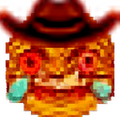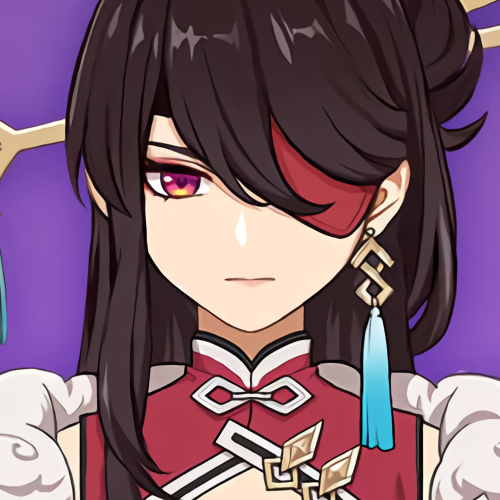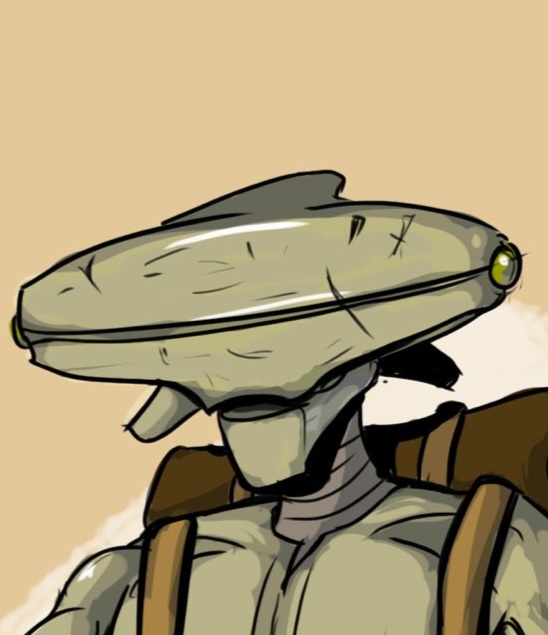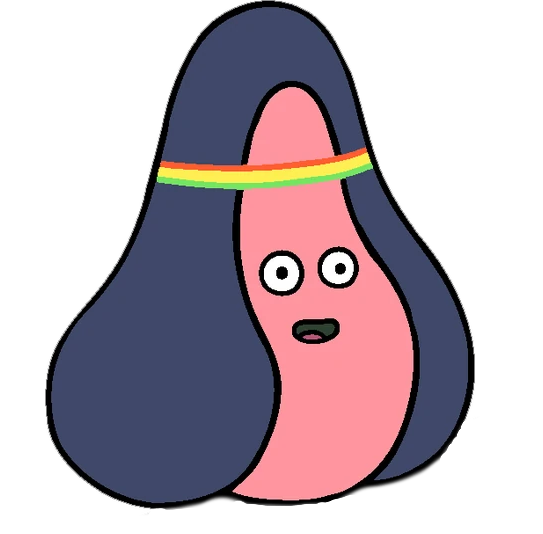The Haitian Revolution. Slave Rebellion on the Night of 21 August 1791, 1805 by Marcus Rainsford
The Haitian Revolution has often been described as the largest and most successful slave rebellion in the Western Hemisphere. Enslaved people initiated the rebellion in 1791 and by 1803 they had succeeded in ending not just slavery but French control over the colony. The Haitian Revolution, however, was much more complex, consisting of several revolutions going on simultaneously. These revolutions were influenced by the French Revolution of 1789, which would come to represent a new concept of human rights, universal citizenship, and participation in government.
In the 18th century, Saint Domingue, as Haiti was then known, had become France’s wealthiest overseas colony, generating more revenue for France than all 13 North American colonies for Great Britain. This wealth came largely because of the island’s production of sugar, coffee, indigo, and cotton generated by an enslaved labor force. When the French Revolution broke out in 1789 there were five distinct sets of interest groups in the colony. There were white planters—who owned the plantations and the slaves—and petit blancs, who were artisans, shop keepers and teachers. Some of them also owned a few slaves. Together they numbered 40,000 of the colony’s residents. Many of the whites on Saint Domingue began to support an independence movement that began when France imposed steep tariffs on the items imported into the colony. The planters were extremely disenchanted with France because they were forbidden to trade with any other nation. Furthermore, the white population of Saint Domingue did not have any representation in France. Despite their calls for independence, both the planters and petit blancs remained committed to the institution of slavery.
The three remaining groups were of African descent: those who were free, those who were enslaved, and those who had run away. There were about 30,000 free black people in 1789. Half of them were mulatto and many of them were wealthier than the petit blancs. The slave population was close to 500,000. The runaway slaves were called maroons; they had retreated deep into the mountains of Saint Domingue and lived off subsistence farming. Haiti had a history of slave rebellions; the enslaved were never willing to submit to their status and with their strength in numbers (10 to 1) colonial officials and planters did all that was possible to control them. Despite the harshness and cruelty of Saint Domingue slavery, there were slave rebellions before 1791. One plot involved the poisoning of masters.
Inspired by events in France, a number of Haitian-born revolutionary movements emerged simultaneously. They used as their inspiration the French Revolution’s “Declaration of the Rights of Man.” The General Assembly in Paris responded by enacting legislation which gave the various colonies some autonomy at the local level. The legislation, which called for “all local proprietors…to be active citizens,” was both ambiguous and radical. It was interpreted in Saint Domingue as applying only to the planter class and thus excluded petit blancs from government. Yet it allowed free citizens of color who were substantial property owners to participate. This legislation, promulgated in Paris to keep Saint Domingue in the colonial empire, instead generated a three-sided civil war between the planters, free blacks, and the petit blancs. However, all three groups would be challenged by the enslaved black majority which was also influenced and inspired by events in France.
Led by former slave Toussaint l’Overture, the enslaved would act first, rebelling against the planters on August 21, 1791. By 1792 they controlled a third of the island. Despite reinforcements from France, the area of the colony held by the rebels grew as did the violence on both sides. Before the fighting ended 100,000 of the 500,000 blacks and 24,000 of the 40,000 whites were killed. Nonetheless the former slaves managed to stave off both the French forces and the British who arrived in 1793 to conquer the colony, and who withdrew in 1798 after a series of defeats by l’Overture’s forces. By 1801 l’Overture expanded the revolution beyond Haiti, conquering the neighboring Spanish colony of Santo Domingo (present-day Dominican Republic). He abolished slavery in the Spanish-speaking colony and declared himself Governor-General for life over the entire island of Hispaniola. Haitian control of Santo Domingo lasted until 1844.
By 1802 the Haitian Revolution had outlasted the French Revolution which had been its inspiration. Napoleon Bonaparte, now the ruler of France, dispatched General Charles Leclerc, his brother-in-law, and 43,000 French troops to capture L’Overture and restore both French rule and slavery. L’Overture was taken and sent to France where he died in prison in 1803. Jean-Jacques Dessalines, one of l’Overture’s generals and himself a former slave, led the revolutionaries at the Battle of Vertieres on November 18, 1803 where the French forces were defeated. On January 1, 1804, Dessalines declared the nation independent and renamed it Haiti. France became the first nation to recognize its independence. Haiti thus emerged as the first black republic in the world, and the second nation in the western hemisphere to win its independence from a European power.
The Black Jacobins: Toussaint L’Ouverture and the San Domingo revolution - C.L.R. James

Haiti’s Forced Payments to Enslavers Cost Economy $21 Billion, The New York Times Found

Invade Haiti, Wall Street Urged The U.S. Obliged.

Revolutions Podcast S4: Haitian Revolution

- 🐻Link to all Hexbear comms https://hexbear.net/post/1403966
- 📀 Come listen to music and Watch movies with your fellow Hexbears nerd, in Cy.tube](https://live.hexbear.net/c/movies
- 🔥 Read and talk about a current topics in the News Megathread https://hexbear.net/post/5882504
- ⚔ Come talk in the New Weekly PoC thread https://hexbear.net/post/5894084
- 🏳️⚧️ Talk with fellow Trans comrades in the New Weekly Trans thread https://hexbear.net/post/5881812
- 👊 New Weekly Improvement thread https://hexbear.net/post/5878078
- 🧡 Disabled comm megathread https://hexbear.net/post/5819594
- ☕ Parenting Chat https://hexbear.net/post/5882839
- 🐉 Anime & Manga discussion thread https://hexbear.net/post/5765324
reminders:
- 💚 You nerds can join specific comms to see posts about all sorts of topics
- 💙 Hexbear’s algorithm prioritizes comments over upbears
- 💜 Sorting by new you nerd
- 🐶 Join the unofficial Hexbear-adjacent Mastodon instance toots.matapacos.dog
Links To Resources (Aid and Theory):
Aid:
Theory:
In the People’s Army, naming my rifle Karen, because she only speaks to managers.
New Megathread nerds!

- 🐶 Join the unofficial Hexbear-adjacent Mastodon instance toots.matapacos.dog
Nerd Call
@Acute_Engles@hexbear.net @AernaLingus@hexbear.net @anarchoilluminati@hexbear.net @AntiOutsideAktion@hexbear.net @buh@hexbear.net @CDommunist@hexbear.net @ClathrateG@hexbear.net @Comrade_Mushroom@hexbear.net @context@hexbear.net @corgiwithalaptop@hexbear.net @Cowbee@hexbear.net @CrispyFern@hexbear.net @CriticalOtaku@hexbear.net @CyborgMarx@hexbear.net @Dort_Owl@hexbear.net @ElChapoDeChapo@hexbear.net @EstraDoll@hexbear.net @FALGSConaut@hexbear.net @Frogmanfromlake@hexbear.net @FuckyWucky@hexbear.net @FunkyStuff@hexbear.net @FumpyAer@hexbear.net @GalaxyBrain@hexbear.net @gay_king_prince_charles@hexbear.net @Grownbravy@hexbear.net @GVAGUY3@hexbear.net @HarryLime@hexbear.net @hexaflexagonbear@hexbear.net @InevitableSwing@hexbear.net @Infamousblt@hexbear.net @iridaniotter@hexbear.net @Lemmygradwontallowme@hexbear.net @LocalOaf@hexbear.net @MaxOS@hexbear.net @Mindfury@hexbear.net @mkultrawide@hexbear.net @Moss@hexbear.net @Nakoichi@hexbear.net @PaulSmackage@hexbear.net @plinky@hexbear.net @PorkrollPosadist@hexbear.net @Ram_The_Manparts@hexbear.net @RedWizard@hexbear.net @RION@hexbear.net @RNAi@hexbear.net @Rojo27@hexbear.net @SeventyTwoTrillion@hexbear.net @SorosFootSoldier@hexbear.net @Sickos@hexbear.net @Sphere@hexbear.net @Tervell@hexbear.net @VHS@hexbear.net @viva_la_juche@hexbear.net @WhatDoYouMeanPodcast@hexbear.net @Wheaties@hexbear.net @WhyEssEff@hexbear.net @WIIHAPPYFEW@hexbear.net @Wmill@hexbear.net @wombat@hexbear.net @Zoift@hexbear.net
@sharkfucker420@lemmy.ml @lelkins@lemmygrad.ml
@CARCOSA@hexbear.net @Alaskaball@hexbear.net @liberal@hexbear.net @ella@hexbear.net @KiraNerys@hexbear.net @BoarAvoir@hexbear.net @dialectical_analysis_of_gock@hexbear.net @RotundLadSloopUnion@hexbear.net @tls123@hexbear.net @cloudy@hexbear.net @IgnusNilsen@hexbear.net @Lyudmila@hexbear.net
No current struggle session discussion here on the new general megathread, i will ban you from the comm and remove your comment, have a good day/night :meow-coffee:
third! BTW, long live the Haitian Revolution!
ay mates nerd here
i am in hell please help
Libs, stop equivocating the Ukraine and Gaza. Im just trying to watch a star trek review and I dont need to get mad every time they’re used in the same breath. They arent similar.
Haven’t seen it yet but I assume this is about Jessie Gender?
Yeah. I only waych her star trek reviews at this point…cause ugh
Yeah, she’s pretty libbed up. I was glad she brought up how much the West Wing sucks when talking about a potential Federation politics show the other day though.
Didn’t see that video. Im okay if they just dont make more star trek. Lower Decks is gone, SNW is drifting right…like season 1 is so much cooler. Enby actor tells Spock he doesnt have to try to be human or Vulcan or a mix. This season has…gimmicks and gossip
They’re gonna make more star trek pretty much no matter what, but the liklihood of them ever making good star trek again is looking slimmer and slimmer.
I have heard that Tawny Newsome is cooking up some kind of trek comedy thing though.
That’s the thing I have the most hope for.
Barack O’s Modern Life
part of a complete break fast
Put children in a cage, wash your hands
I love when sci fi shows forget that cricket sounds dont just mean its night time and come from an animal native to earth.
Seeing way too many social media takes saying that DEI is killing a popular, beloved company, when it’s obviously private equity killing them.
Generations are capitalism etc but as a millennial, lemme say, im really proud of us for skipping middle age. Just going full old person mode the second you cant act young anymore is a really smart move. As soon as partying all the time gets old, instead of being normal it seems a good set got into tea and knitting and stuff early af. This is a sick move. Being middle aged seems like the worst, get a head start on being old, im friends with a bunch of older folks and the cool ones are soooo stoked that they got to an age that they can just fucking vibe. Adulthood is pretty much impossible so going straight from 20s to senior citizen coded is admirable af.
Trying to explain depression to people who don’t understand it is always funny
what isn’t funny is one time i told my family i am depressed i think when i was a little younger and they immediately told me they’ll beat the ever living snot out of me and then i’ll see the depression go away
that’s not how it works :(
I almost left work a couple days ago out of depression. Just say goodbye and leave. I was totally OK with throwing my career away I felt so shitty.
i wish it was that easy, my family is just telling me to keep at it because getting a job is fucking impossible but at this point why bother living when it’s always pain and it never gets better i’ve been told “it will be better trust me” for my entire life and it just got worse and worse and worse and worse
i want alone time and my family made me devoid of it. i want peace and quiet and my family made me devoid of those.
I don’t want to post too much doomer shit in the mega. But ya comrade, it’s hard as fuck, and doesn’t feel worth it. It’s definitely not you’re fault that you’re unemployed, especially especially if you’re under 30.
“it will be better trust me”
Ya you’re being gaslit.
i have a job… at a fucking call center and i am guilt tripped to work there by my family because “at least you won’t work in germany at a construction site oh yea YOU ARE TOO WEAK FOR THAT”
it’s worse than having no job, at least i would’ve played more deltarune or knew what the fuck anything y’all talk about every day means. what the FUCK is a “ts pmo”???
i do not want to talk about my job anymore i wish i never had it i wish i never had my family either i wish i had the same life i’ve always had but without them i just want to be alone to do fuck all all day every day and be happy
If it makes you feel any better I also don’t know what the fuck a “tspmo” is
i think it’s what kendrick lamaj said in the chorus for “humble”
I don’t want to gaslight anyone, but having been very depressed such that it completely ruined my early-mid 20s, around 26-27 it really did get significantly better with no change in my life, medication, or circumstances. Hormones are often a huge cause of depression in young adults.
I have no other way of saying it, but
You’ve done good. I’m proud of you. You will succeed. I will never doubt you. As you may struggle, i will always be here for you.
thank you
also why are you proud of me what did i do. shitposts and drawings that like 5 people like but i have to contact them to look at my shitposts and drawings? ramblings online?
i was passionate for many things but one by one, the passion of that specific thing is gone. it’s all about money. my family started giving me alone time but only because i have a job. why couldn’t they just do that before i had a job
“why are you depressed you have so many good things to be happy about!”
“Yes I know that but if it were rational it wouldn’t be an illness then would it”
Here’s the twist though it is rational
 I need the kids to stop buying all these Labubu’s… and start Labu-boo’ing the Trump administration!
I need the kids to stop buying all these Labubu’s… and start Labu-boo’ing the Trump administration!
Soy glazed eggy plant
Hola glazed eggy plant

Chat, is this true?

In typical Chinese extravagance they excel at both posting and touching grass
this is true dialectics

I hope this doesn’t sound shitty.
Sometimes, near the end of the school term, when my brain is absolutely dead. Like I can barely string together words its so tired. I literally wish I had a physical labour job.
And then I carry heavy boxes for two minutes and everything hurts for a week.
I’m on the other side and my brain is screaming for some kind of engagement.
i know how it feels. every single free day of mine is just this. mental exhaustion, then family keeps calling me over for help, then my body wants to explod from pain
grass is usually greener
I want to mow grass

this is probably already a thing but it would be very funny to sell americans a shoebox-sized patch of lawn they could tend to like a bonsai tree
I know we’re not supposed re-litigate old struggle sessions in the mega, but I need to say it.
spoiler
more cis men need to wear skirts.
spoiler
Skirts need to become the default bottom wear for everyone in the summer. It’s just too fucking hot to wear anything without airflow.

You 🤝 🏴
The cracker barrel discourse is a pure distillation of American stupidity
They’re seriously malding about cracker barrel’s rebrand being woke lol what
more like woker barrel 🤣 they/them-fried soyteak 😂😂😂
With a side of inclusivity fries dipped in pronoun sauce

reactionary “thought” in its purest form, they see anything change and they get angry
Even the wokeists hate it though! It’s ugly as fuck! Maybe if someone would reach across the aisle and try to unite on this issue, we might win the revolution

















